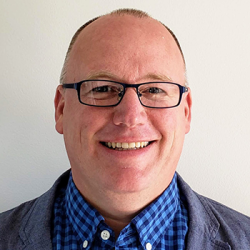
I remember my first year teaching freshmen Global Studies at a brand new Project Based Learning school. I was so excited to allow students to pursue their own paths in student centered learning. I gave them open-ended topics like imperialism to pursue with little guidelines and no rubrics. I thought the students could research and figure out what interested them and what was important all on their own.
Fairly soon the students started coming to me and begging for guidance, and it wasn’t limited to struggling students. The most vocal students were the ones who had gotten all A’s in traditional classes. Some of their complaints were based on the fact that they had previously understood the “game” of school and PBL had changed the rules of what it meant to be successful. Instead of just regurgitating back what the teacher said on the test, they now had to analyze and think critically for themselves.
But some of their complaints were legitimate. It was unrealistic of me to throw them into the deep end of the pool without first teaching them how to swim.
They were like young Forrest Gump with his crooked back unable to walk correctly without his leg braces. Too much voice and choice before students are ready can paralyze them into a state of confusion and indecision.
Gradual Release is Vital
This is why the Gold Standard teaching practice of Scaffolding Student Learning is so important for teachers and students who are new to PBL. It is vital that teachers gradually release students into PBL in structured manner. For me that meant creating study guides of key concepts and terms, teaching students how to find good sources and evaluate them, and leading workshops tying the various concepts into the big picture of history. As the year went on, students became better researchers and I was able to teach them to break down our state standards by themselves to guide their investigations.
Fast forward to this year. I am starting my 6th year as a PBL teacher, on the National Faculty at BIE, and confident in my abilities to teach PBL. But the setting has changed. I have moved to 6th grade math in a local district with students who have only experienced a very controlled, traditional classroom. Once again I dream up a student centered project to launch the school year by having my students learn the coordinate plane while designing a game in Scratch. I figure that I will give them a list of requirements and challenges and then turn them loose to problem solve both how to use the program and solve my quests.
A week into the school year, before I even started the project, I realized that my expectations were very unrealistic. My 6th grade students struggled to remember their passwords and login, as their previous technology experience was extremely limited. They didn’t know things as basic as opening a file and using two fingers to “right click” on a Mac. Everything had to be taught to them. I adjusted by making a Google Presentation of Scratch instructions with screenshots and arrows. I scaffolded the technology, but I neglected to scaffold the math enough. I thought students could learn the coordinate plane by using Scratch, but they needed practice on it before designing a game.
The moral of the story is that scaffolding is the key for a successful PBL project. Even when we think that we’re “experts” at the craft of teaching PBL in a student centered fashion, we still need to be cognizant of our students’ experience level of owning their own learning. If they have never had any experience of being in control and we turn them loose without enough boundaries they will sink, not swim, and both the teacher and student will become discouraged in the process. But if we design appropriate supports along the way then students will gain confidence and start to take over. Just like Forrest Gump, they will start to break free from their braces and run after all sorts of incredible learning experiences!

